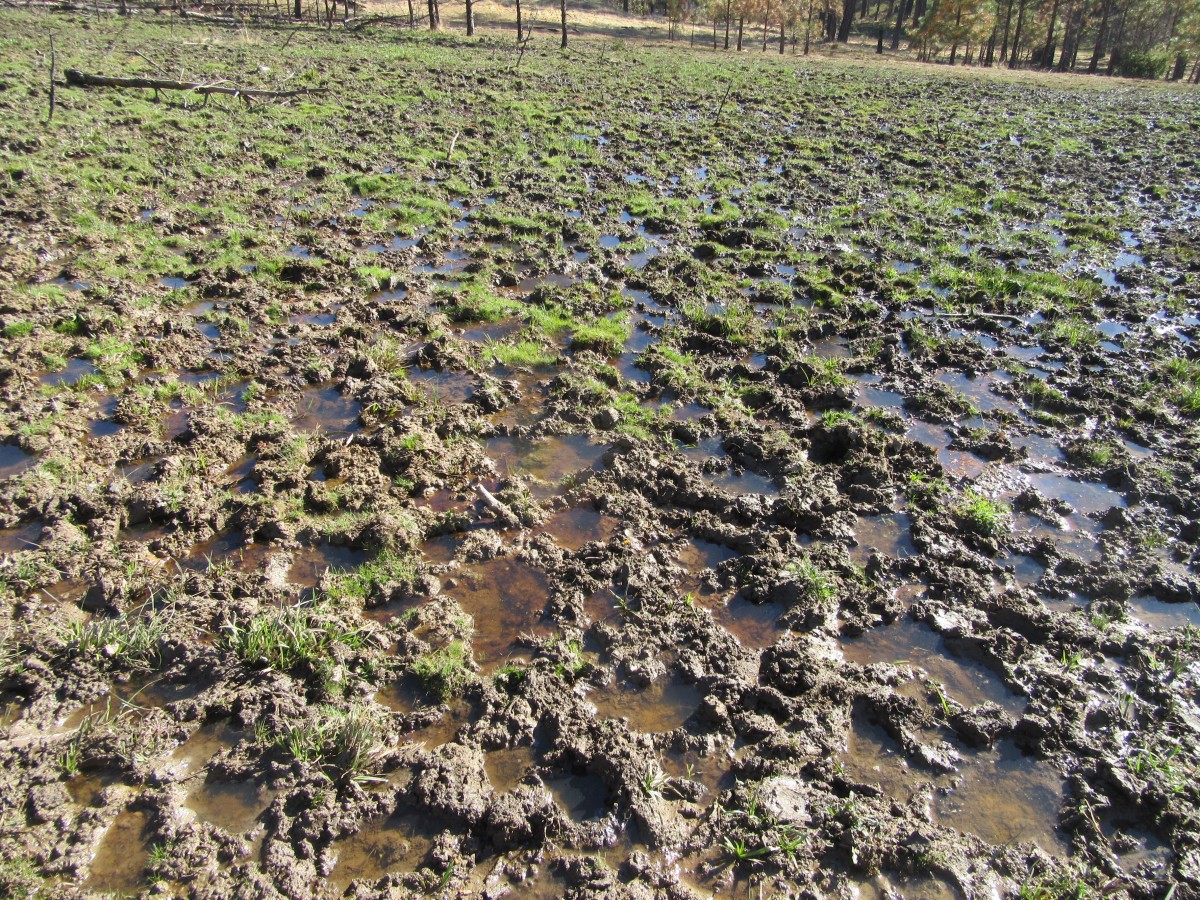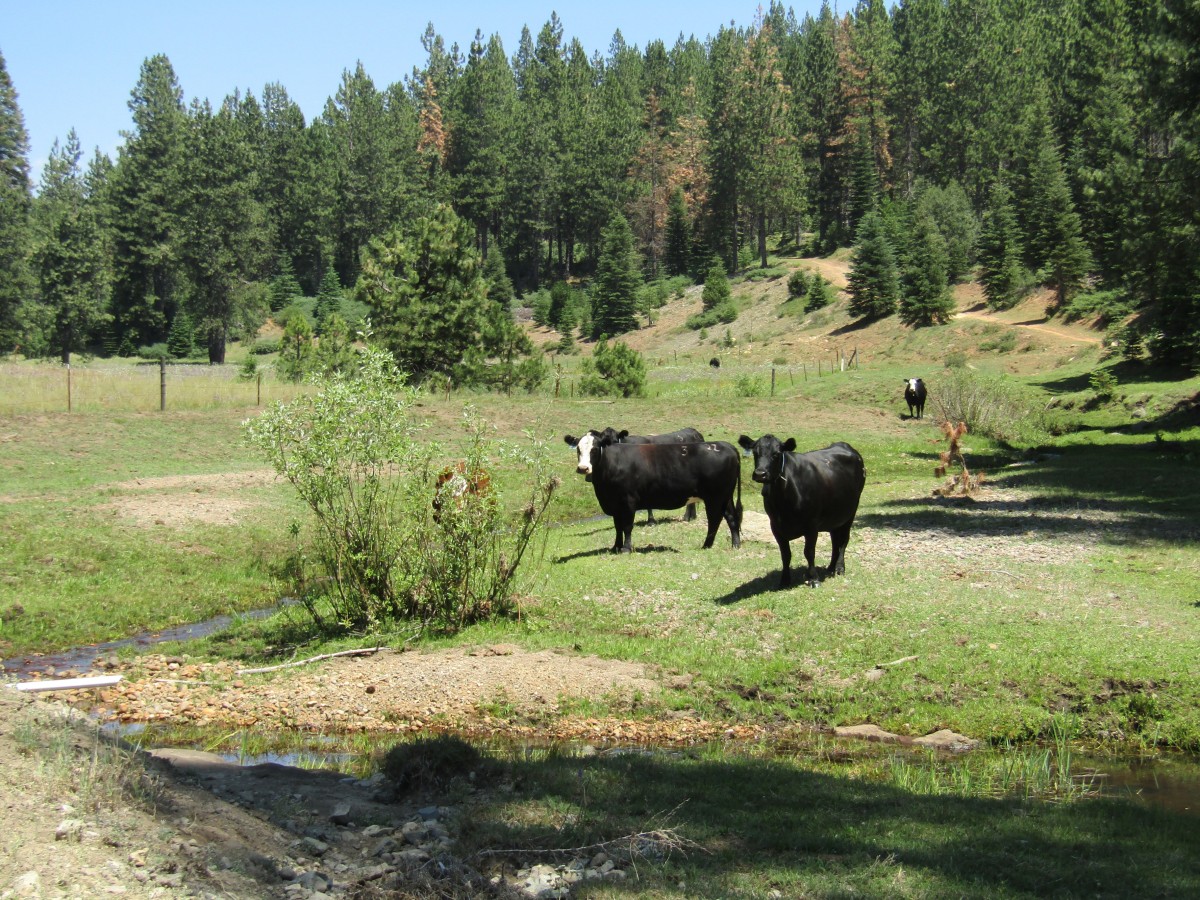Livestock grazing is a historic practice on national forest lands. Ranchers with permits (“permittees”) bring truckloads of cattle up to the Stanislaus Forest in late spring or early summer, and the cattle often remain in the forest until October. During that time, the cattle disperse across vast “grazing allotments” where each permittee has responsibility for managing their cattle.
The Forest Service has many regulations and requirements that are supposed to prevent livestock damage to meadows, wetland areas, water quality, rare plants, and recreation. But for more than 20 years, CSERC has monitored livestock impacts on the Stanislaus Forest – and every year we discover overgrazed meadows, trampled and chiseled streambanks, high-lined (over-browsed) willows, and streams with cow patties that contribute to the water quality violations proven by CSERC’s water quality testing. Independent laboratory results often find that stream samples contain high levels of pathogenic bacteria.
After years of imploring the Forest Service to enforce its own regulations and to better protect water quality from livestock, CSERC finally filed litigation last year. The Forest Service has refused to admit that there is any need for management change. Livestock industry interests are aligned with the Forest Service in the legal process. It is truly a case of David vs Goliath – our small non-profit against a huge federal agency and allied industry organizations.
Over recent months a huge amount of CSERC staff time has gone into our litigation and our monitoring work that continues to document resource damage. Against stiff odds, CSERC continues to push for major changes that will better protect water, plants, and wildlife.



